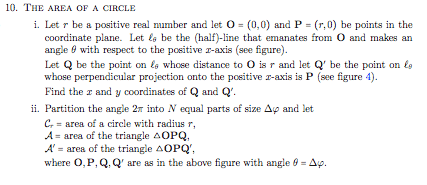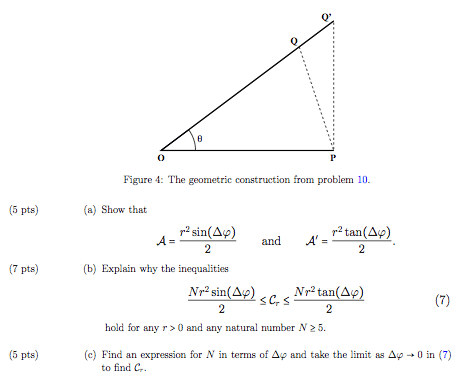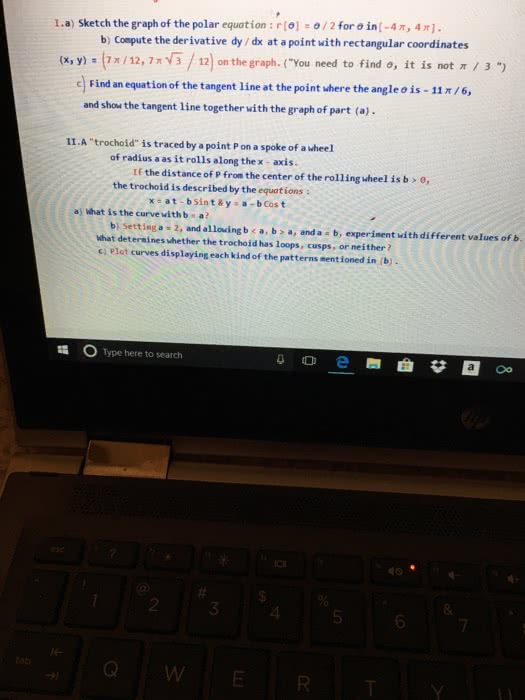MA 16200 Lecture 33: lesson 33 notes
37 views1 pages
19 Apr 2016
School
Department
Course
Professor
Document Summary
The coordinate system we are used to is called cartesian or rectangular. Look at the point (1,1) on the cartesian system: The angle between the x-axis and the line connecting (0,0) to this point is pi/4. The length of the line connecting (0,0) to this point is sqrt(2) So the polar coordinates of the point (1,1) are (sqrt(2), pi/4) Polar coordinates describe the location of a point in terms of a directed angle (theta) and a directed distance along the theta line (r) A point (p) has polar coordinates (r, theta) A negative r means you go in the reverse direction (across the origin, or pole ) In general (r, theta) and (r, theta + 2pi) are the same point; it is just completing another rotation to get there. Any point with r = 0 is on the pole , it doesnt matter the angle because it has no length. R^2 = x^2 + y^2 (distance formula)
Get access
Grade+20% off
$8 USD/m$10 USD/m
Billed $96 USD annually

Homework Help
Study Guides
Textbook Solutions
Class Notes
Textbook Notes
Booster Class
40 Verified Answers
Class+
$8 USD/m
Billed $96 USD annually

Homework Help
Study Guides
Textbook Solutions
Class Notes
Textbook Notes
Booster Class
30 Verified Answers










